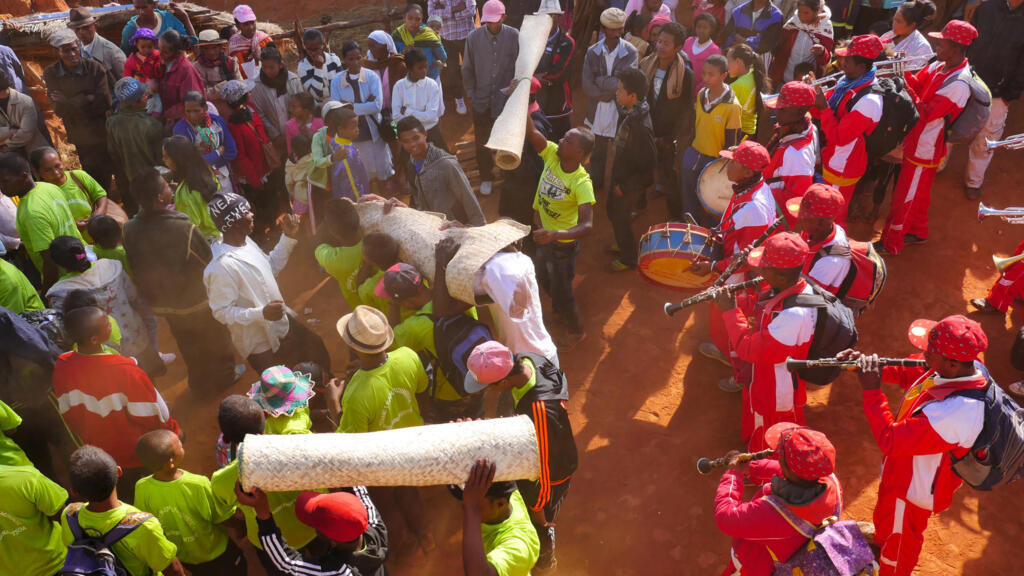
In Madagascar, winter brings with it a unique family gathering. Across the central highlands, communities practise the famadihana – the “turning of the dead”. The ritual, rooted in Austronesian culture and dating back to the 16th century, involves exhuming ancestors, wrapping them in fresh silk shrouds and celebrating them in a lively, joyful ceremony.
In Ambohidranandriana, a village about an hour’s drive south of Antsirabé, in the volcanic Vakinankaratra region, music and laughter rise from a noisy procession weaving between the family tombs.
For Fitahina, 25, the day is deeply personal. She came to honour her grandmother, who died before she was born.
“I am happy to meet her because I never knew her. I have been waiting for this moment for a very long time. I miss her a lot," Fitahina tells RFI.
"When the body comes out of the tomb, I will go closer and talk with her. I will tell her the good and the bad things in my life. I know she can still hear me.”
Nearby, guests share plates of vary be menaka – rice with fatty zebu meat – while men begin to open the vast family tomb, buried under dust.
Meet the tiny tuft-tailed saviour of Madagascar's endangered baobabs
Fitahina's aunt, Claudine, wears an elegant hat for the commemoration of her late mother.
“I am proud that my family is gathered for this famadihana,” she says. “I will pray for my mother and ask her for blessings – health and a long life for my children.”
One by one, the bodies are carried out. Descendants lift them high in their arms as the crowd moves in jubilation.
Alphonse, a neighbour invited like hundreds of others, describes the ritual.
“We wrap the ancestors in a new silk shroud, the lambamena,” he explains. “It is a sign of love and consideration for the good they did for us. This is how we honour them.”
A little toaka gasy – traditional Malagasy rum – is poured on to the fresh silk. Only at nightfall, when dusk settles over the rice fields, are the ancestors returned to their family tombs.

Financial pressures
The famadihana usually takes place every five or seven years, depending on a family’s means, but it is a costly event. Food, drink, musicians and services for hundreds of guests add up, and donations rarely cover the full expenses.
The financial demands are pushing some families away from the ritual, anthropologist Annie Raharinirina, from the University of Antananarivo, tells RFI.
“Some families go into debt to organise the famadihana, but young people in the cities do not really practise it any more,” she says.
Others still commit to large-scale celebrations, calling on professional event organisers for their famadihana.
“They invite famous artists, hire catering services. Families save for years. They sell their zebus [humped cattle, a traditional sign of wealth] or use them as food for the guests," Raharinirina says.
"Some sacrifice a lot, and there are even some who go into debt to organise a celebration worthy of the name. Some people say it is better to save and spend money for the living than for the dead.”
Madagascar's master artisans sail through time to revive lost ships
Tradition in transition
However younger generations are increasingly divided over the practice of this centuries-old ritual, Raharinirina explains.
“Young people in the cities no longer really practise the famadihana, but young people in rural areas like the Itasy region or Antsirabé, many still do,” she adds.
For now, in villages like Ambohidranandriana, the tradition remains a major event. Families and neighbours gather in large numbers, carrying out rituals passed down for centuries.
For participants like Fitahina, it is a chance to come face to face with ancestors and speak with them across generations.
This story was adapted from RFI's original version in French







